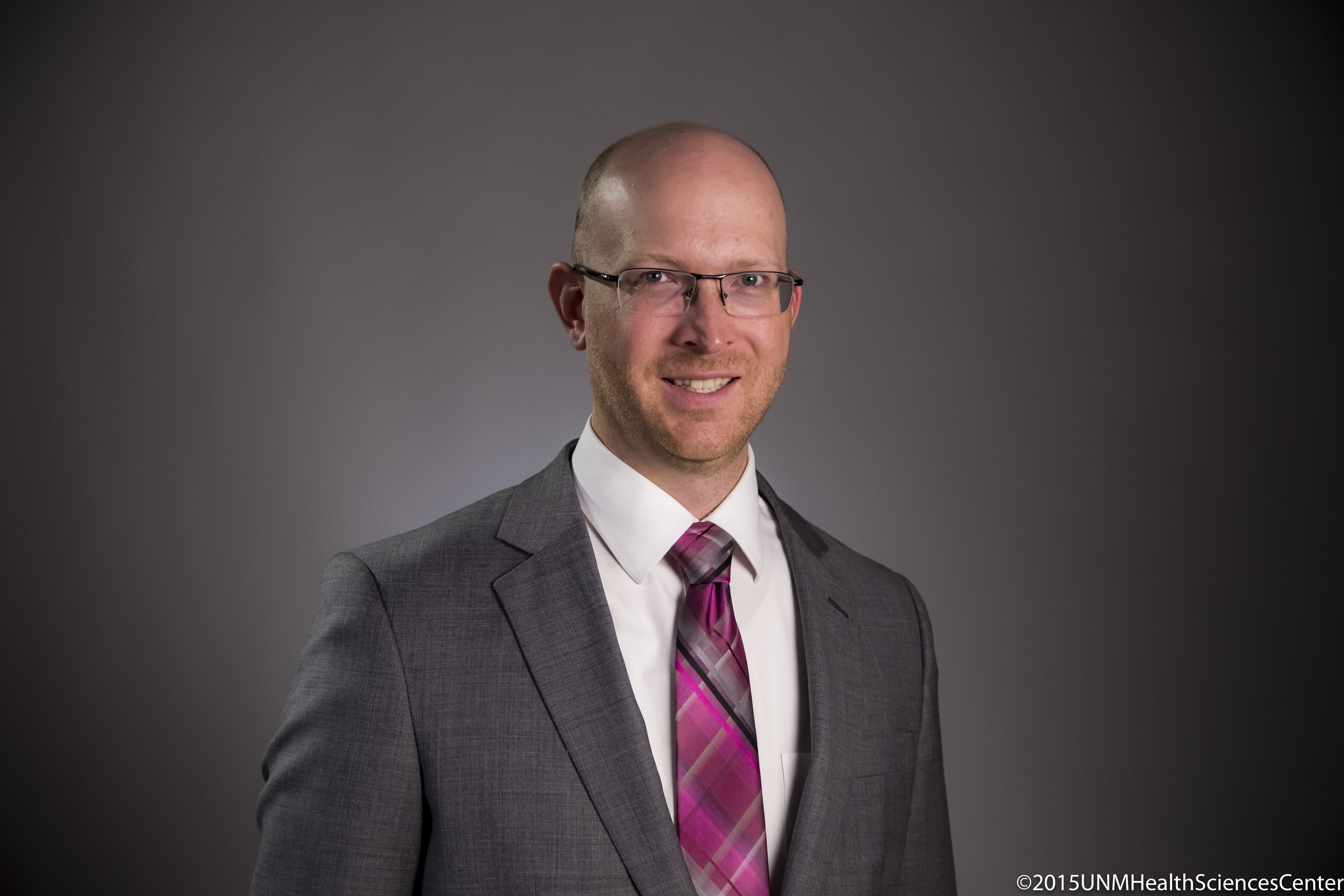
Looking Out for Brain Tsunamis
UNM Neurosurgeon Andrew Carlson Highlights the Need to Closely Monitor Brain-Injured Patients
When a patient with an injured brain is lying unconscious in the ICU doctors urgently need to find out what’s going on inside the “black box,” because that information will help them decide on the best course of treatment.
At The University of New Mexico Hospital’s state-of-the-art Neurosciences Intensive Care Unit, a team of specialists uses sophisticated technology to monitor brain-injured patients, including those who have suffered traumatic brain injury, aneurysm ruptures, subarachnoid hemorrhage and stroke.
“We probably have more people with specialty experience in neuro-critical care than almost any place in the country,” says UNM neurosurgeon Andrew Carlson, MD. “We really are leading the country and the world in monitoring people with how their brain is doing.”

Due to their injuries, Neuro ICU patients are at heightened risk for developing elevated intracranial pressure, a potentially lethal condition in which a buildup of fluid or swelling inside the skull damages fragile brain tissue, he says.
Slender sensors the width of a pencil tip can be inserted through the skull to monitor intracranial pressure, spinal fluid, oxygen and other factors, Carlson says. Some years back, UNM physicians helped pioneer the use of the Hummingbird neuromonitoring system, which requires that a single hole be bored through the skull to both drain excess cerebrospinal fluid and monitor the health of the brain tissue.
Carlson recently became the first neurosurgeon in the world to use a new, simplified version of the Hummingbird system that only measures intracranial pressure with a patient who was recovering from emergency brain surgery in the wake of a traumatic injury.
“It’s extremely easy to put in,” Carlson says of the device, which, unlike an older generation of probes, can be recalibrated at the bedside to ensure an accurate pressure reading over many days of monitoring.
“Brain physiology can be very complex,” he notes. “It can be hard to sort out if someone has too much blood flow or not enough blood flow, or if they have swelling. In an unconscious patient with a severe brain injury the treatments might be very different for those things.”
Pressure monitoring takes on added importance when a patient is in a coma and unable to undergo conventional tests for neurological functioning. “It’s a way to look inside the black box,” he says.
Carlson, an assistant professor in the UNM Department of Neurosurgery, graduated from the UNM School of Medicine and completed his residency there in 2011, followed by fellowships at the University of Illinois at Chicago and the University of South Florida.
His work in detecting and treating injured brains extends to a research grant he received as a member of the UNM Center for Brain Recovery and Repair. The research focuses on cortical spreading depolarization – destructive “brain tsunamis” that radiate from a focal point following a head injury or stroke.
Carlson is studying whether these depolarizations leave telltale signs in neurologic function, and whether approaches to target these events could improve outcomes.
He also wants to identify factors that affect the type of depolarization a patient experiences, as well as determine the best way to define and score these brain tsunamis.
“We think these brain tsunamis affect how well people can recover from their injuries,” Carlson says.